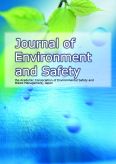Volume 4, Issue 3
Displaying 1-9 of 9 articles from this issue
- |<
- <
- 1
- >
- >|
Original article
-
2013Volume 4Issue 3 Pages 171-176
Published: September 30, 2013
Released on J-STAGE: October 25, 2013
Download PDF (698K) -
2013Volume 4Issue 3 Pages 177-183
Published: September 30, 2013
Released on J-STAGE: October 25, 2013
Download PDF (1296K) -
2013Volume 4Issue 3 Pages 185-194
Published: September 30, 2013
Released on J-STAGE: October 25, 2013
Download PDF (2200K) -
2013Volume 4Issue 3 Pages 195-201
Published: September 30, 2013
Released on J-STAGE: October 25, 2013
Download PDF (949K) -
2013Volume 4Issue 3 Pages 203-211
Published: September 30, 2013
Released on J-STAGE: October 25, 2013
Download PDF (1695K)
Editorial
-
2013Volume 4Issue 3 Pages 213-220
Published: September 30, 2013
Released on J-STAGE: October 25, 2013
Download PDF (1611K) -
2013Volume 4Issue 3 Pages 221-228
Published: September 30, 2013
Released on J-STAGE: October 25, 2013
Download PDF (1623K)
Topics & Reports
-
2013Volume 4Issue 3 Pages 229-235
Published: September 30, 2013
Released on J-STAGE: October 25, 2013
Download PDF (1127K) -
2013Volume 4Issue 3 Pages 237-246
Published: September 30, 2013
Released on J-STAGE: October 25, 2013
Download PDF (1481K)
- |<
- <
- 1
- >
- >|
